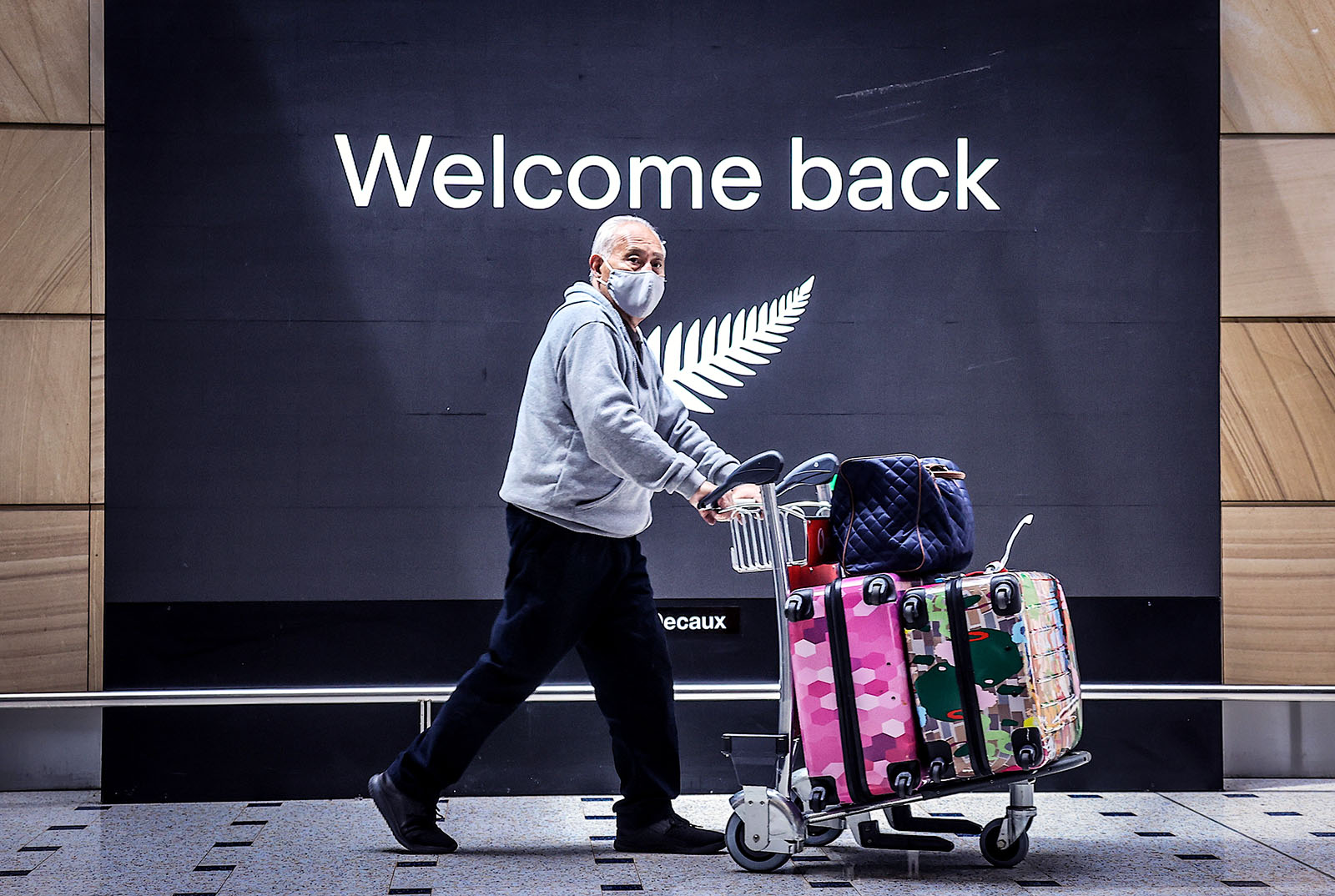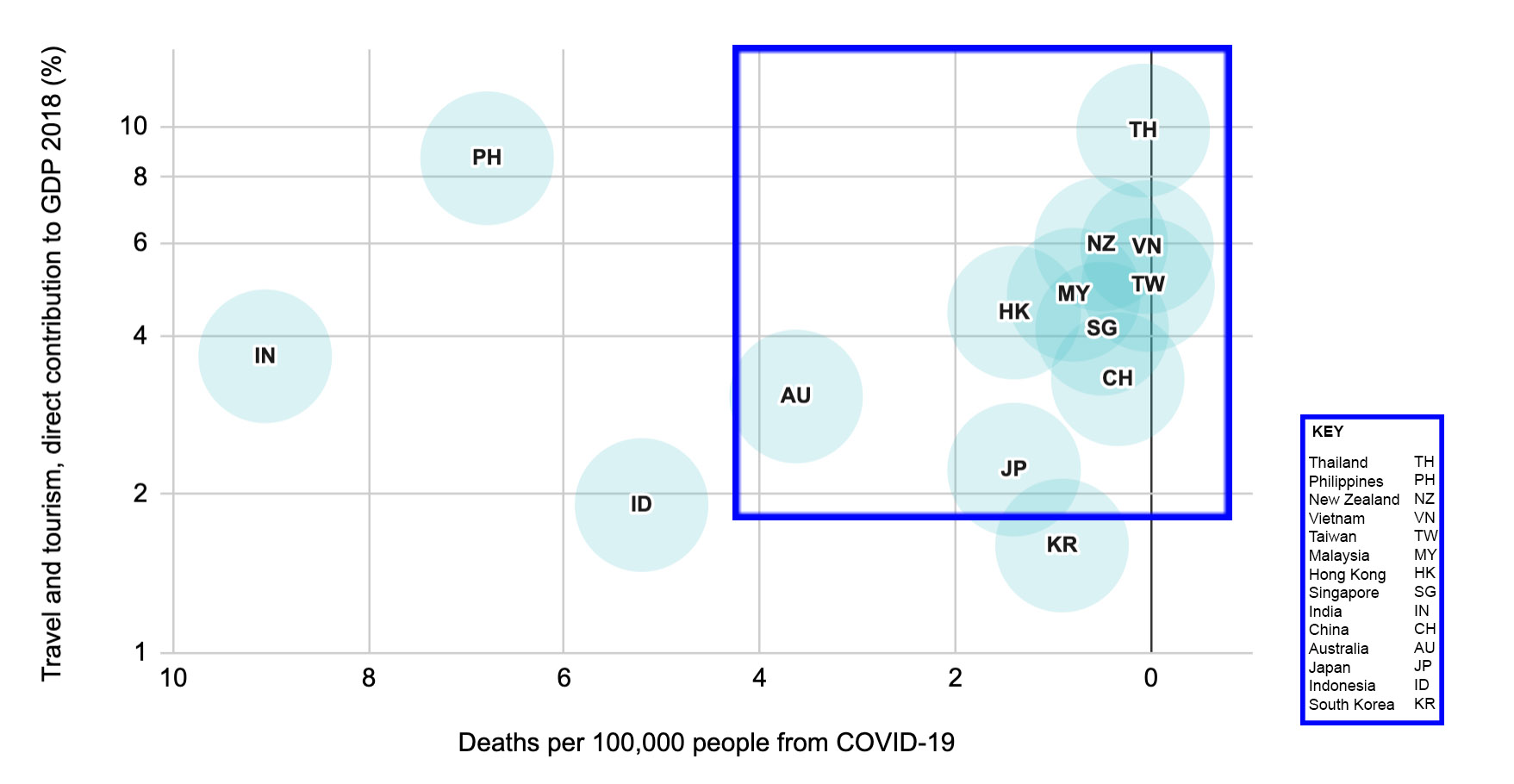Travel Bubbles in Asia Offer Hope for Global Aviation

A passenger arrives from New Zealand at Sydney International Airport in October 2020. Australia and New Zealand became the first countries in Asia-Pacific to implement a travel bubble.
Photo: David Gray/AFP via Getty Images
The idea of “travel bubbles” first rose to prominence earlier in 2020, when the COVID-19 pandemic brought global air travel to an abrupt standstill.
In theory, jurisdictions, which have successfully contained coronavirus, would agree to open borders to each other, dispensing with the need for travelers to quarantine. Risk of transmission remains low for passengers moving within the bubble, while importation of new cases from outside is curtailed.
Global Flyers Grounded
Talk of creating more comprehensive regional travel bubbles has now resumed in Asia-Pacific, as governments weigh up the risk of a resurgence from imported cases against the economic gains from reopening.
While domestic air travel has revived in some regional markets — carriers in China reported sales for the month of September surpassing 2019 figures — international air travel is facing a protracted crisis.
The International Air Transport Association, an industry group, forecasts that global air traffic will fall by 66% in 2020, and do not expect international passenger traffic to return to pre-pandemic levels until 2024.
An August survey of Chinese consumers showed that while confidence in domestic travel is nearing “completely safe,” outbound travel is perceived to be “not safe at all.” Until travel restrictions ease, flights resume and a vaccine is effectively distributed, consumers will feel uneasy about boarding international flights again.
Compulsory 14-day quarantine upon arrival, mandated by a number of Asian countries, is putting off tourists and business travelers, as is a lack of standardized cross-border health protocols.
Travel Bubbles Take Off
To raise passenger confidence and restart cross-border movement, travel bubbles are now being piloted in the region.
In October, Australia and New Zealand became the first countries in Asia-Pacific to implement a bubble since New Zealanders were permitted to travel to New South Wales and the Northern Territory. In practice, this arrangement is a “half-bubble” only — Australian tourists cannot enter New Zealand, while New Zealanders must quarantine upon returning home.
Singapore and Hong Kong have taken things a step further, announcing preliminary plans for what will be the first two-way travel bubble in the region. The agreement waives quarantine at both ends for travelers who test negative for COVID-19.
Those jurisdictions forging ahead with travel bubbles — Hong Kong, Singapore, Australia and New Zealand — share common attributes. International travel and commerce is a key driver of these economies, providing a strong impetus for governments to persist in negotiations despite the inherent complexities and risks.
All four have done a commendable job of countering the COVID-19 pandemic, establishing robust testing and contact tracing protocols to detect and suppress outbreaks. Indeed, it is the capacity to control domestic infections, and a high level of trust and communications between governments that will dictate the success of these initiatives.
Some governments have forged bilateral agreements to ease international travel for a limited group of travelers, but stopped short of fully embracing the concept. China and South Korea established a travel corridor, allowing visitors to apply for reduced quarantine if testing protocols are followed, while Singapore’s “green lanes” for essential travelers from Brunei, China, Japan, Malaysia and South Korea mandate controlled itineraries.
Bilateral Trust Is Essential
These shared characteristics — economic dependency on international travel and a good record of managing outbreaks — points to the prospect of geographies such as Thailand, Taiwan, Vietnam, and Malaysia following suit.
Rising cases and the toll of the virus in India, Indonesia and the Philippines will make it harder to establish the level of bilateral trust needed for a travel bubble to succeed. A lower dependency on travel and tourism to drive economic activity in India and Indonesia also lessens the political will to enter into negotiations, and see them to fruition (see chart).
Asian economies with success in controlling the coronavirus and exposed to international travel are most likely to establish travel bubbles
If successful, these travel bubbles could expand to incorporate new members and create a larger regional consortium, or inspire countries to strike bilateral deals resulting in a grouping of smaller bubbles.
What is clear is that international air travel will be reeling from the economic effects of the pandemic for years to come. In anticipation of a long recovery, these pilot schemes could offer a model for countries across the world to reopen borders and restart international flights, while minimizing the risks to public health.





